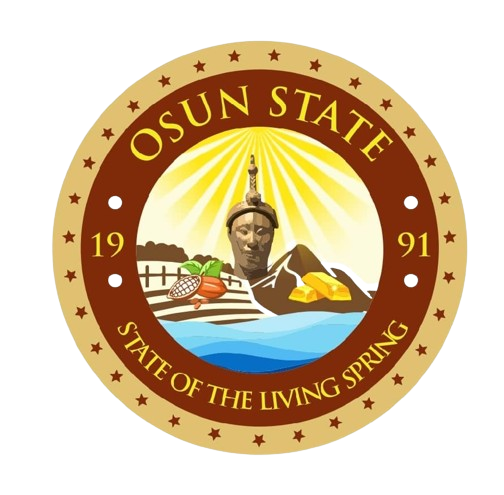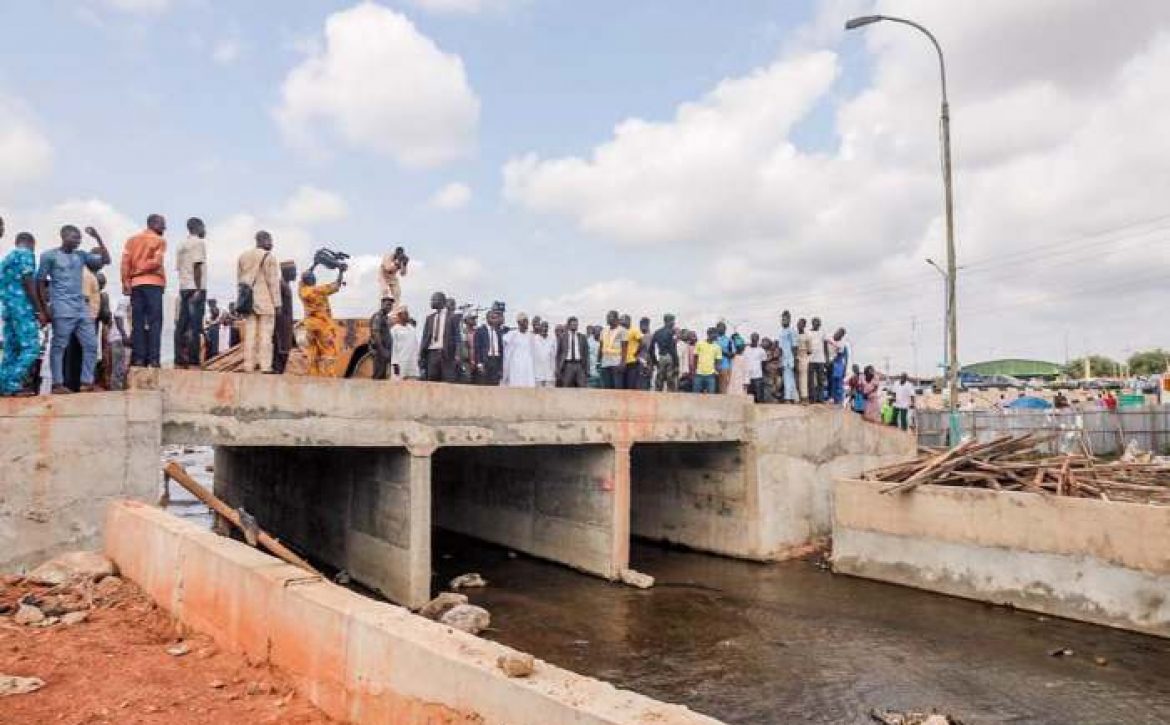Over the years, flood in Nigeria has pushed rivers over their banks and submerged hundreds of thousands of acres of farmland. In just over five years, floods had forced 1.3 million people from their homes and claimed 431 lives, according to Nigeria’s National Emergency Management Agency.
The river Niger and Benue used to be thin rivers flowing through braided channels, with isolated water bodies dotting the floodplains. Years later, both rivers had burst their banks, engulfing the small lakes and ponds, the Niger River had ballooned into a sprawling temporary lake. The reasons for that included carelessness and negligence by government.

Flash floods are common in Nigeria in the rainy season (May-September), some parts of Nigeria have witnessed the fair share in the hazards caused by flood over the years. The Nigerian Red Cross reported that about 120,000 people had been left homeless. Thousands of displaced residents had to flee temporary shelters as the floods also overwhelmed fire brigade efforts of governments in affected states.
Besides destroying buildings and lives, floods have the devastating ability to ravage crops and destroy transportation routes of any community that are unlucky to have the unwanted visit of flood.
Residents of Osogbo, especially people around Rasco area of Oke-fia cannot easily forget the devastating 2015 flood. The flood which was caused by over 12 hours heavy rainfall, wrecked havoc on the state capital. Buildings were submerged; precious lives were lost, while properties worth millions of naira were also washed away by the devastating flood of that particular year. The Rasco area of Oke-fia is an area in Osogbo which has always been prone to flooding over the years, due to construction of houses on erosion path, on streams, blockage of drainages and total disregard to the environmental laws. This is the case in some parts of Osogbo. The rasco bridge which was built many years ago has over the time become too small and not large enough to contain the volume of water following during the raining season. The annual flood occurrence in the area has resulted to loss of properties; it is a commercial area where complex, shops and containers are located.
However, relief came to the people of the area when the present administration of Ogbeni Rauf Aregbesola who has demonstrated his commitment to prevention of flood and erosion control in his first term by embarking on dredging of streams and rivers across the state, made move to address the Rasco flood. The Rasco flood control project started with separation of buildings and shops that were built on waterways and those that were very close to the river. The separation cost the government millions of naira.

During the exercise, it was discovered that the cause of flood in the area was because the original path for the water had become too narrow to contain the water whose volume has risen over the years. There was need to expand the waterways, the rasco river was subsequently dredged to clear the debris preventing the free flow of water. A reinforced retainer and concrete chanelisation of about 12meters wide and 2.5meters high was made to have a smooth control and flow of the river.
Significantly, a much bigger bridge which corresponds with the wider range of the water path to control the huge volume of water, a triple cell bus Culvert with each of the cell constructed to a specification of 2.5 meters wide and 3 meters high was put in place to guide against a situation where the flood overflows to the road. The bridge which has been under construction for about four months has now been completed and opened for use. While the bridge was majorly reconstructed to be able to accommodate the now high volume of water that pass under it, the state government also thought it wise to construct the bridge to meet world standard as the road over the bridge has now been reconstructed with pave stones to add beauty to the area.
Residents of Rasco area around Oke-fia in Osogbo are full of praises to Aregbesola for coming to their rescue as they can now sleep with their two eyes closed without the fear of their properties being swept away by flood.

When Aregbesola’s administration came into existence in 2010, one of its first areas of intervention after the recruitment of 20,000 youths through the Osun Youth Empowerment Scheme (O’YES) was t flood and erosion control. Osun had witnessed terrible devastating flood before Aregbesola’s emergence. The havoc wrecked on the citizens of Osun in 2009 and 2010 by floods is such that cannot be forgotten in a hurry because it left a lot of homes and families in pains and sorrows which many of them are yet to recover from. There has been persistent flooding in the state during the rainy seasons, with instances of loss of life and houses being submerged. But Aregbesola’s administration took the bull by the horn and the state summoned the flood phenomenon.
The Aregbesola administration immediately took it as point of duty to do everything possible to protect the people from flooding as millions of naira was released between 2011 and 2012 for the dredging of streams and notorious rivers which had over the years caused flooding in the state. For the past seven years, the Aregbesola administration has not looked back in the determination to avoid flooding in Osun as rivers and streams such as the Okookoo and Ogbagba streams in Osogbo has never been left untouched on a yearly basis. Streams and rivers in other towns such as Ikire, Ikirun, Iwo, Ile-Ife, Ode-Omu, Ilesa and other towns in the state are also not left out in the scheme of things. There is virtually no stream or river in the state which the dredging machine of Aregbesola has not touched in the bid to ensure that the state does not have to start spending billions of naira into the provision of make shift shelters, buying of relief materials and the ugly situation of having to coping with a food crisis.
For a state that is prone to flooding because of the many rivers and streams that it has, it will not be out of place for the state government to always put the issue of dredging the water ways on the front burner, just as the Aregbesola administration is doing and it is gratifying to know that the efforts of the state government is paying off.
Running into about 75 kilometers, the water ways which the Aregbesola dredging machines work on annually include; Esimirin, Agbara, Opa, Gbalefefe, Ogboku, Osun streams in Ile-Ife and Modakeke-Ife axis. We also have the Opopo, Ogbun, Amino, Akeri in Ila-Orangun. In Ilesa axis there is the Omiru, Olutokun and the Adeti streams. The Mogimogi and Aiba rivers in Apomu and Iwo respectively are also not left out. A number of stream and rivers of not less than 30 kilometers in towns like Ipetu-Ijesa, Ejigbo, Yakooyo, Ipetumodu, Asipa, Ikirun, Iragbiji, Ede and Igbajo are also being dredged on an annual basis to avoid flooding.
At the beginning of every year, meteorologists have always done their job of predicting and at the same time warning the people and government of the amount of rainfall that will be witnessed in any particular area. But it is so unfortunate that most state governors in the country always resort to the fire brigade approach of doing things. The floods would have already wrecked its harvock and ravaged homes and farmlands before the government begin to act. Many state governments in the country believe in spending huge amount of money on relief materials instead of spending lesser amount of money preventing flood.
The United Nations Integrated Regional Information Networks reported that farmers lose a lot during floods, and it is common knowledge that inadequacy of food is a crisis on its own. Nigeria as country is going through the most difficult time in history as a result of fall in the prices of crude oil in the global market. The country and all state governors are trying to look inwards for a way out, the only viable way out is to diversify into agriculture.
Going by that, Aregbesola’s administration needs to be commended given a huge path on the back for spending billions of naira into dredging of water ways to avoiding flooding whose devastating effect among others is the sacking of farmers from their farmlands and destroying valuable crops in its wake. When flooding occurs, farmlands are washed away, fish ponds are swept off and people count their losses in millions of naira. The effect of this is shortage of food which leads to hunger and insecurity.
A trader in one of the shops close to the “Rasco bridge” in Osogbo, Mr Orim Nwachukwu while recounting his experiences about the past flooding incidents of the area said it used to be difficult and horrible for the people in the area during the rainy seasons as they always had to leave their houses to other places for fear of being swept away by flood.
He said, “Where do I start from? It used to be a very terrible experience. Once the rain starts around May/June and it begins to come thick and fast, we don’t have a choice than to pack out of our shops or else our properties will be swept off by flood”.
It is now the responsibilities of citizens to ensure that water ways are kept clean and free by not dumping refuse on streams and rivers. By doing this, they would have gone a long way in complementing government’s efforts in ensuring that the state of the virtuous is flood free.













